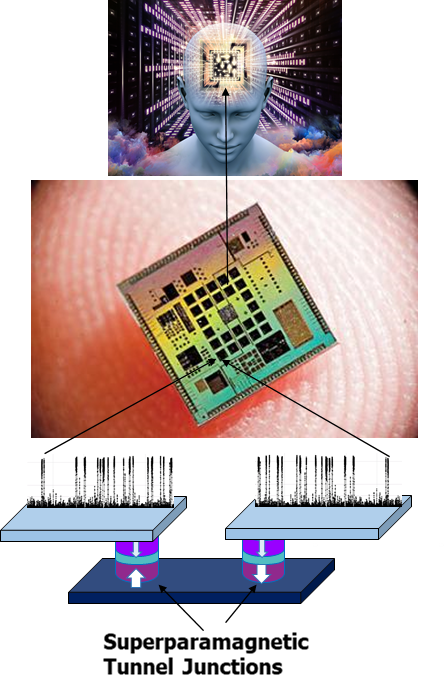
STOCHNET stands for Hybrid Stochastic Tunnel Junction Circuits for Optimization and Inference.
The motivation behind StochNet is to explore — through experimental demonstrations with hybrid CMOS stochastic tunnel junction circuits and simulations of theoretical architectures — the technological feasibility of recently explored brain inspired computing frameworks that point towards neural stochasticity as being fundamental to the robustness and computing ability of the brain. Instead of considering this stochasticity as a nuisance to be averaged over, neurons are treated as probabilistic machines, sampling from an uncertain world, combining sampled probability distributions in order to learn target distributions. Generating stochasticity with deterministic CMOS circuits is notoriously difficult. We propose using superparamagnetic tunnel junctions (SMTJs) — naturally fluctuating low-barrier counterparts of back-end-of-line integrated magnetic tunnel junction (MTJ) memory technology — as our source of randomness. With appropriate CMOS circuitry, these stochastic fluctuations can be converted to digital voltage transitions based on a preferred choice of encoding, namely neural rate codes and neural temporal codes. While the computational power of neural rate codes have been well studied in the context of energy based equilibrium models, non-equilibrium models and neural temporal codes have been largely unexplored. In this conext, SPINTEC in collaboration with National Institute of Standards and Technology (NIST), LETI, University of Maryland (UMD), will develop stochastic magnetic tunnel junctions, build hybrid circuits that implement stochastic encoding schemes, and perform experimental demonstrations to validate functionality. We will use these circuits as primitives in an exploration of architectures that perform optimization with non-equilibrium rate coded dynamics.
Local contacts at SPINTEC
Partners
- National Institute of Standards and Technology (NIST)
- University of Maryland (UMD)
- LETI (CEA)




